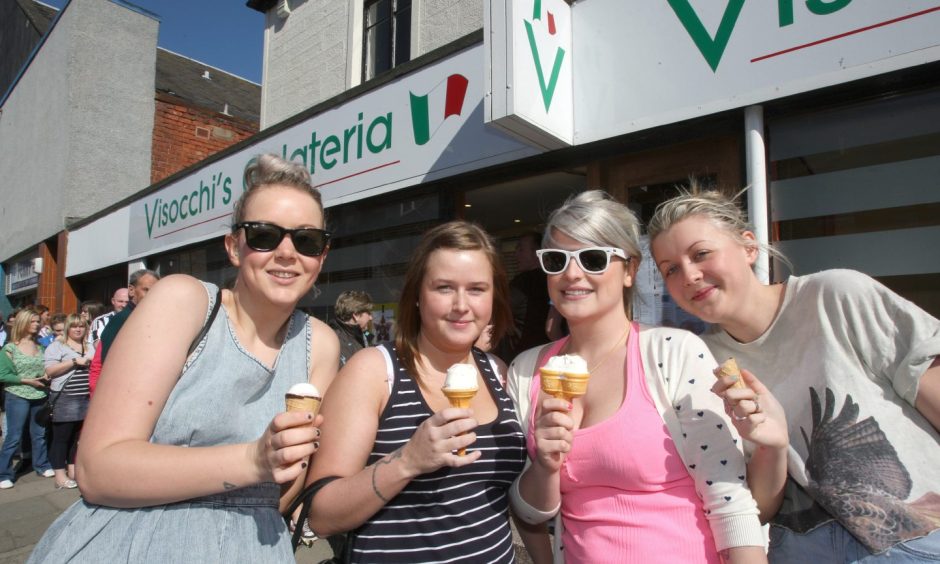
Ices of all kinds are so popular with us today that it is difficult to imagine summer without them.
Ice cream was once a rare treat that only wealthy people could afford but it was Carlo Gatti that enabled the London working classes to have a taste.
He started selling ice cream to the public for the first time.
Gatti was so successful that he and others brought more Italians over to join them.
The ingredients could be easily mixed at home and taken out to be sold on the streets.
The outlay required was minimal but the vendor had to work a lot of hours.
Ice cream as a street snack caught on fast.
Dundee Italians took to the streets
A few enterprising Dundee Italian ice cream vendors began hawking penny ices on barrows through the streets in the 19th Century.
For some it was a brief living, while for others it was a way of life.
This soon developed into the setting up of ice cream parlours and Dundee Italians became the largest European group in the city by 1911.
During the First World War the Ministry of Food imposed the Ice Cream (Restriction) Order in January 1918 to conserve the supplies of milk and sugar.
The making or selling of ice cream was prohibited under the legislation.
Dundee Italians made an unsuccessful petition to Food Controller Lord Rhondda to withdraw the restriction and 50 shops were closed.
They remained closed until after the war.
The Dundee Directory for 1921 listed 51 Italian traders, of whom 45 were involved in some form of catering when the community numbered 321.
Luigi Esposito pushed his barrow all over Broughty Ferry and Dundee.
His day started at 7am when he mixed ice-cream for two hours.
Each day’s ice cream was freshly made as there was no refrigeration to keep it.
The day’s round would finish as late as 10pm.
Everything changed in 1939
Between the wars was the heyday of ice cream shops in Dundee.
In the Hawkhill there were five alone.
The Second World War split the world’s nations into two opposing military alliances.
Mussolini’s Italy entered the war on the side of Germany in June 1940 which had devastating consequences for Italian immigrant families living in Scotland.
Italian men were classified as “enemy aliens” and placed in internment camps.
Some businesses were kept open by family members born in this country.
Others closed for the duration.
Fred and Vincent Ianetta sold ice cream from barrows around the city.
In 1946 the family was credited with introducing the modern ice cream van to Dundee.
At the peak of the business they operated a fleet of 16 vans.
The 1950s and 1960s heralded the glory days for the ice cream van.
The jingly-jangly sound wafting over a warm breeze could mean only one thing.
The excitement of hearing the jingle and standing in the queue with other kids and breathing in diesel fumes was possibly the biggest thrill of the week.
The great British seaside holiday came into its heyday in the post war years.
Ice cream provided cool relief when people flocked to Broughty Ferry before most “bucket and spade” breaks were taken in European destinations.
There was a beach hut and ice cream kiosk.
Sadly now long gone.
Luxury ice cream made with love
The Washington Café was in Union Street.
It was famous for cheese and onion rolls and ice cream with enormous wafers.
Maybe you remember having a float with a choice of Barr’s fizzy drink?
The Keiller Centre was Dundee’s go-to shopping mall after opening in 1979.
Jacanoni’s made Dundee and Dundee United ice creams featuring peppermint flavouring for the white and blue Dundee cone and liquorice and orange for the tangerine and black United version.
They sold knickerbocker glory, banana split, hot choc ripple and Christmas pudding flavour ice cream during the festive season.
The shop was across from Magic Eye Video.
Ianetta’s moved to Dryburgh Industrial Estate in the 1970s and branched out into the wholesale manufacture and distribution of ice cream.
The name changed from Fred Ianetta & Sons to the Casanova Ice Cream Company.
In 1983 Casanova was churning out 16,000 litres of ice cream per day in containers and produced 22 different flavours and four ripples.
Casanova was described as the “luxury ice cream made with love”.
The ice cream was found in large stores and small shops the length and breadth of the country including William Low supermarkets.
“The advent of the deep freeze was a blessing to the ice cream trade,” said Fred.
“Now that there is one in many homes, the market seems stable and secure,
“In 10 years we have increased the number of our delivery vans from one to seven.
“With so many deep freezes about, everyone can enjoy ice cream.”
Did you enjoy a squasher in Lochee?
Frankie Davie’s Ice Cream Parlour was the go-to place for many locals in Lochee.
What was on the menu in the 1980s?
A squasher was two wafers with ice cream and a snowball.
They had to be handled with care.
There was also an oyster which was an oyster-shaped wafer with mallow inside and a scoop of ice cream.
A sponge ice cream was two sponge biscuit-style circles with a scoop of ice cream.
A slider was two wafers with ice cream and a flake in the middle.
You could also buy a nougat wafer.
The ice cream recipe was so top secret, the mix was made at home, then brought to the shop to be churned.
Do you remember Robertson’s Ice Cream Parlour in the Wellgate Centre?
Ice cream with sauce was 40p in 1987.
Cherry sundae was 65p and 70p for a banana boat.
This was a banana stuffed with chocolate and marshmallows.
Robertson’s was located in the market hall known as Inshops alongside familiar names like Pennywise, Wellgate Carpets and Gemini Jewellers.
The most famous shop was Visocchi’s
There was also Café Monte Carlo in Main Street which made 200 litres of ice cream each day and was operated by Charles and Umberto Vettraino.
The most famous name is Visocchi which has been a constant in Broughty Ferry since 1954 when Marco Caira opened a shop in Gray Street.
It started as a café, selling sweets, coffee and tobacco.
In the late 1970s, they changed the concept of the business and decided to focus on being an ice cream shop and introduced a more Italian feel.
Visocchi’s became a Broughty Ferry institution.
The café was a regular haunt for photographer Iain Macmillan who took the iconic image of Abbey Road for The Beatles’ album in 1969.
Argentine World Cup superstar Claudio Caniggia loved spending the afternoon in Visocchi’s drinking coffee during his time at Dundee FC.
A lot has changed since 1954 but the long queue of people snaking from the doorway and up the street remains a tell-tale sign that good weather is here.
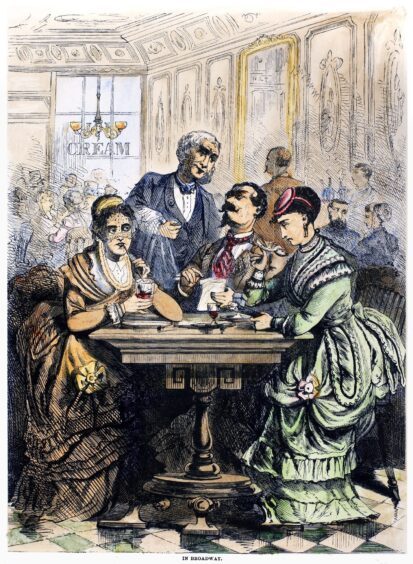
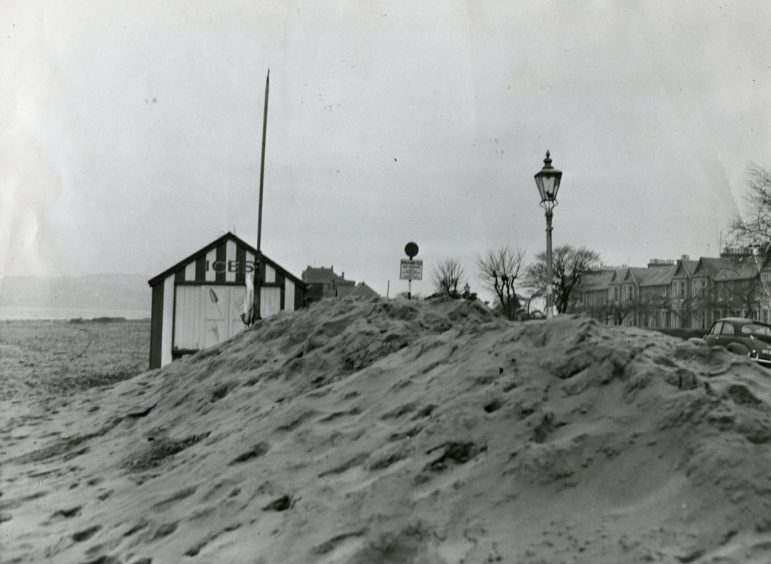
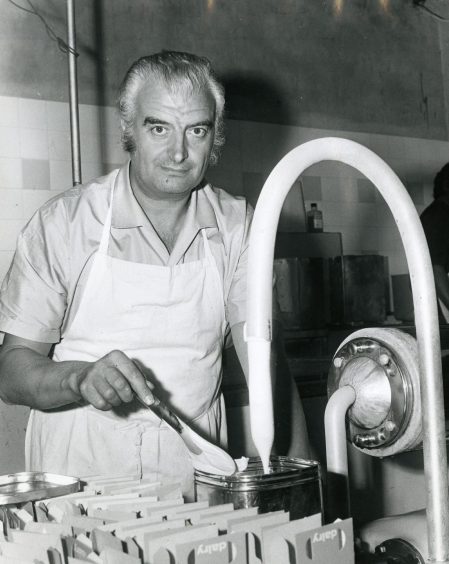
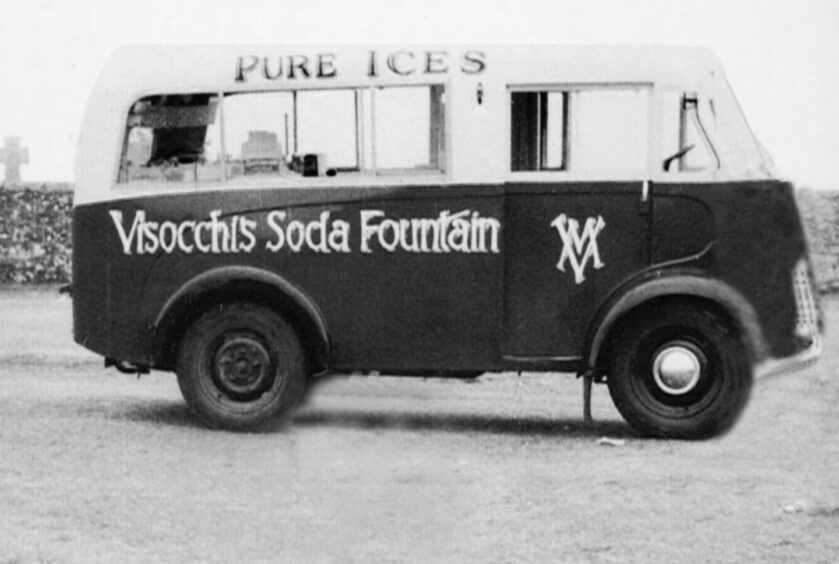
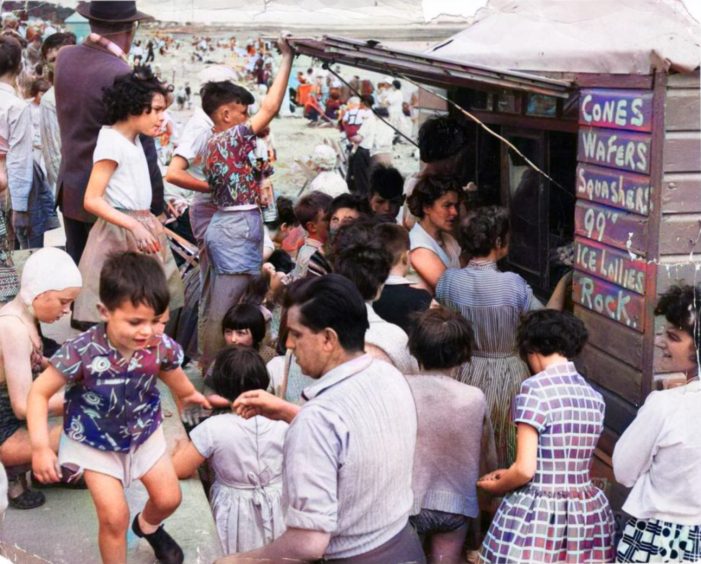
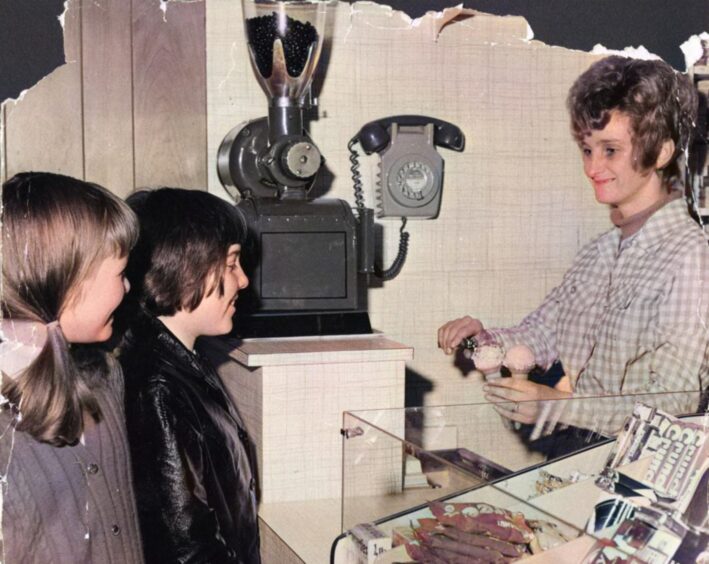
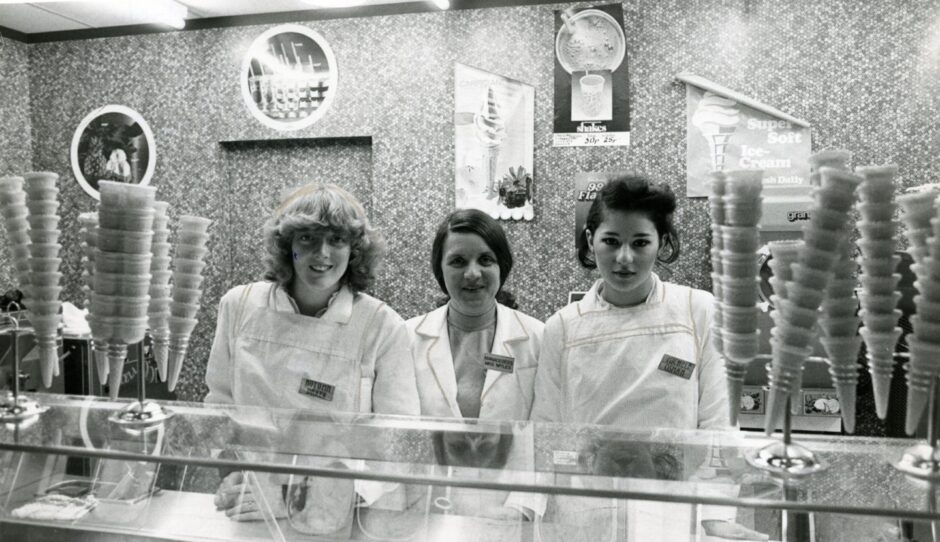
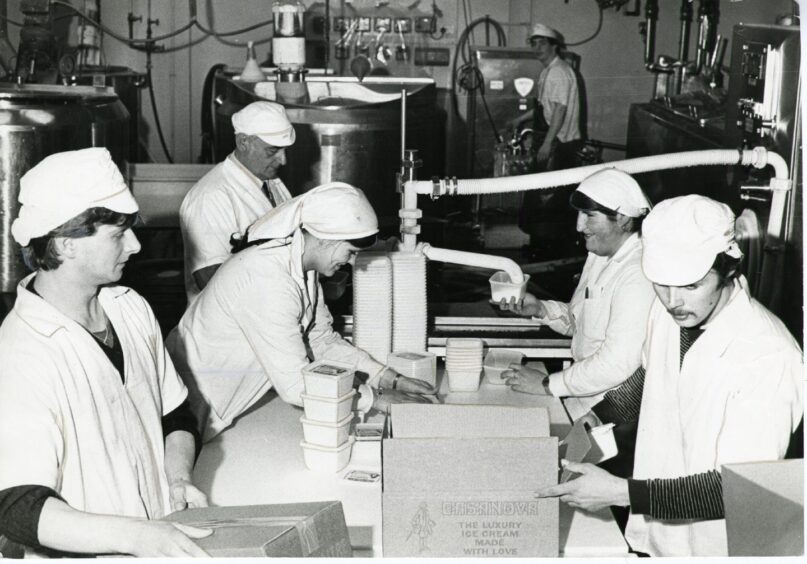
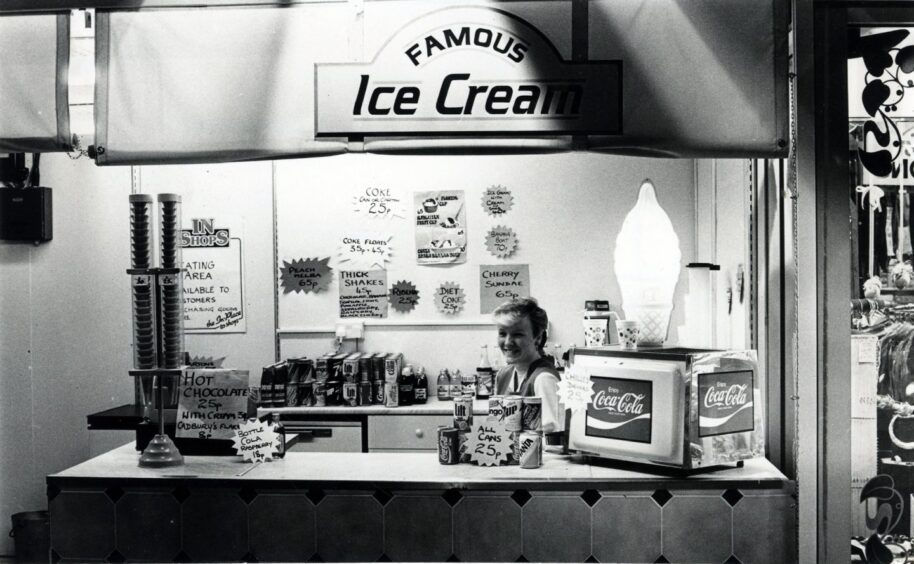
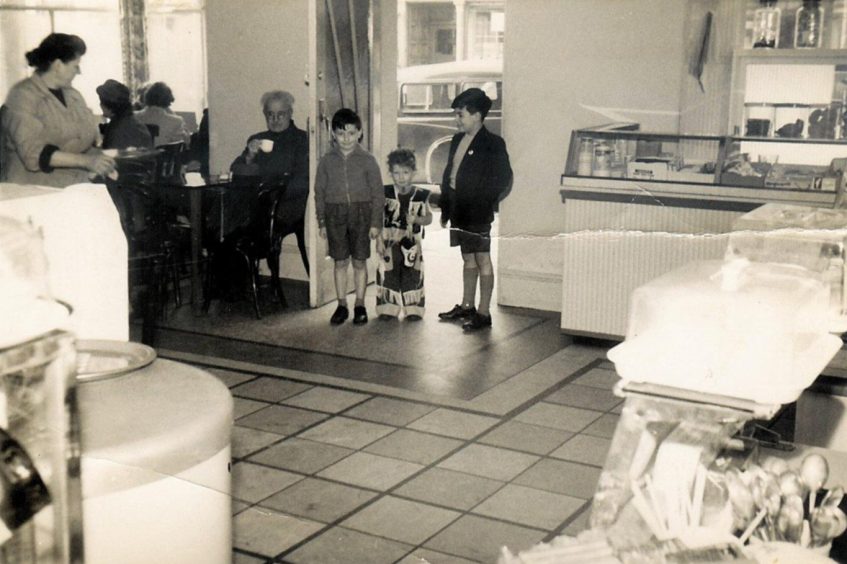
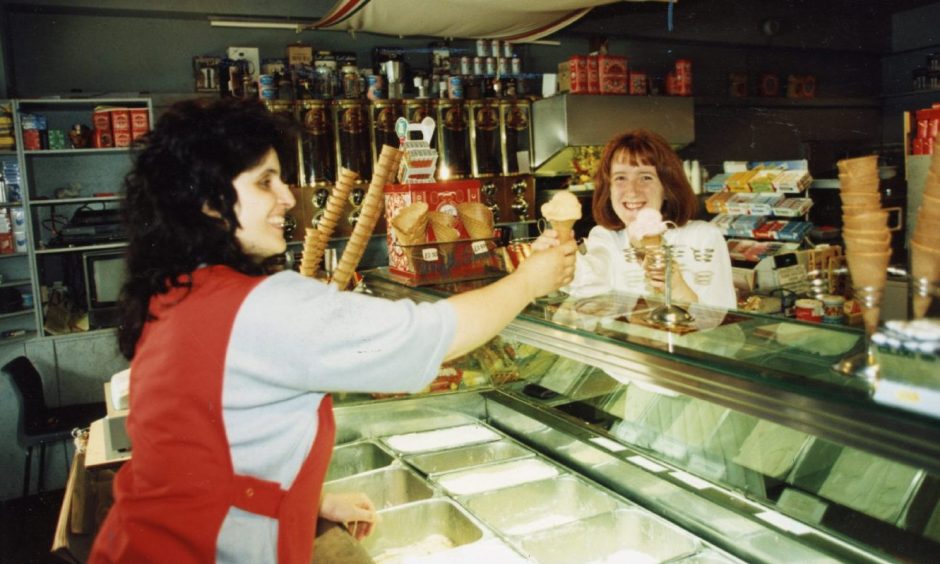










Conversation